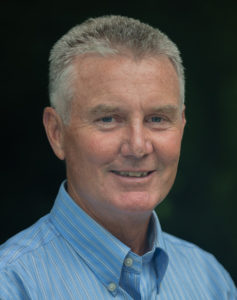Bill Wilson: Charlestown Closer To Fulfilling A Dream
The following letter appeared in local newspapers and is shared with us here by the author Bill Wilson. Mr. Wilson is a former member of the Ad Hoc Bicycle Pathway Committee and Parks & Recreation Commission.
As one member of the bike committee said back in 2014, his dad worked 30 years ago toward a bike path in Charlestown. Since then there have been numerous studies by the town and state. Most recently statewide planning (Feb. 26, 2018) produced the Rhode Island Moving Forward 2040 Long Range Transportation and Bicycle Mobility Plan and the town followed with a feasibility study for a connection between the village center and Ninigret Park.
The feasibility study, is the first phase in fulling the state’s goal of a coastal route linking Westerly with Narragansett and points north. One important aspect of the study is researching the best and safest way across Route 1. The feasibility study, by professional engineers Vanasse Hangen Brustlin (VHB), has identified the opportunities and constraints, impacts and cost. VHB employ the Americans with Disability Act, American Association of State Highway and Transportation, Uniform Traffic Control and Rhode Island Department of Transportation guidelines to develop the study. The Charlestown Parks and Recreation Commission and Town Council commissioned the study to determine if a pathway is viable. No decision is made until the public and stakeholders have the opportunity to review the data and provide input.
The result is a very professional examination of the potential for the first phase of the state’s goal of a coastal route. The state has identified Routes 2, 216, 112, and 91 north of Route 1 as “suitable for biking,” while no roads have that designation south of Route 1, and hence the focus of the study.
The town’s commitment to fund the study ($27,500) demonstrates our commitment while strengthening its position when applying for Transportation Improvement Program, Green Economy Bond or other funding opportunities. Additionally, the state has identified Route 1 to Route 1 (Chamber of Commerce to Gateway Health) on their 2020 schedule for repaving. One consideration of the bike subcommittee to reduce the cost is by incorporating the two projects in a timely manner.
Since these are state roads, and the state has a legal (or regulatory) obligation to create intermodal transportation, the RIDOT will be the main funder through bond, Transportation Improvement Program (TIP) and state and/or federal funds.
Please note: “the acquisition of private property by eminent domain has never been used in Rhode Island for bike paths.” Importantly, every community with bike paths and residential and commercial property experience added value. Just ask the folks along the William C.O’Neill Bike Path in South Kingstown.
Many have asked about the beach roads, all three being a safety concern. If we can advance this study to the engineering and design phase, it will be a guide for what can be done with constraints facing the three beach roads.
In 2018, Charlestown worked toward fulfilling the goals of Moving RI Forward 2040 and the Statewide Bicycle Mobility Plan with the concept feasibility study for Phase 1 of a coastal route.
